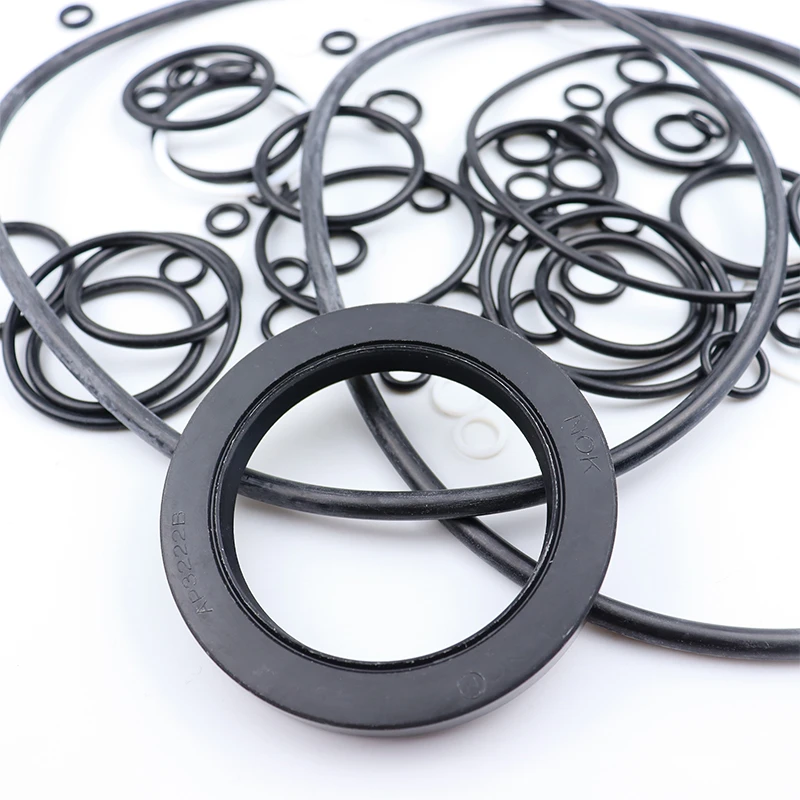Déc . 13, 2024 15:25 Back to list
high pressure shaft seals
Understanding High Pressure Shaft Seals Importance, Design, and Applications
High pressure shaft seals are critical components used in various industrial applications where fluids are contained under pressure. These seals play an essential role in ensuring that machinery operates efficiently while preventing leaks that could lead to costly downtime, environmental hazards, or safety concerns. Understanding the importance, design, and applications of high pressure shaft seals is vital for maintaining system integrity and performance.
Importance of High Pressure Shaft Seals
The primary function of high pressure shaft seals is to prevent the escape of fluids and gases from rotating shafts while preventing the ingress of contaminants. This is crucial in systems where machinery operates at elevated pressures, such as hydraulic pumps, compressors, and turbines. Proper sealing is necessary to maintain the integrity of the fluid within the system, ensuring optimal performance and longevity of machinery.
Moreover, high pressure shaft seals help improve energy efficiency by reducing leakage. In hydraulic systems, for instance, even a small leak can lead to significant energy loss, which can increase operational costs. By minimizing leakage, these seals contribute not only to cost savings but also to sustainability efforts by reducing fluid waste and potential environmental impact.
Design Considerations
The design of high pressure shaft seals must account for various factors, including the nature of the fluid, temperature, pressure conditions, and rotational speed. Common materials used for high pressure seals include elastomers, PTFE, and metal components. Each material has its strengths and weaknesses; for example, elastomers are flexible and provide a good seal but may degrade under extreme temperatures, while PTFE offers excellent chemical resistance but can be less effective under high loads.
The design of high pressure seals typically includes features such as lip designs, spring mechanisms, and labyrinth systems. Lip seals, for instance, create a barrier through a flexible lip that adapts to the shaft's movement, maintaining a tight seal even under pressure. Spring-loaded seals incorporate a spring mechanism to enhance the contact force against the shaft, providing additional sealing strength.
high pressure shaft seals

Types of High Pressure Seals
There are several types of high pressure shaft seals available, each suited to specific applications. Rotary shaft seals, commonly used in pumps and turbines, are designed to accommodate the rotational movement of the shaft while providing a reliable barrier against leaks. Mechanical seals are often found in applications requiring higher pressure and temperature tolerances, such as chemical processing and oil extraction. These seals use a sliding contact between two surfaces to maintain containment, making them highly effective in demanding conditions.
Lip seals are another popular option, composed of a flexible lip that presses against the shaft to provide a seal. These are particularly effective for moderate pressure applications and are often used in automotive and industrial machinery.
Applications Across Industries
High pressure shaft seals are utilized across a range of industries, including manufacturing, automotive, aerospace, and oil and gas. In manufacturing, these seals are crucial for hydraulic systems that power machines, ensuring efficient fluid transfer without leaks. In the automotive industry, they are used in engine components, transmission systems, and wheel bearings.
The aerospace sector relies on high pressure seals for engines and control systems, where reliability is paramount due to the harsh operating conditions. In the oil and gas industry, high pressure seals are essential for maintaining containment in drilling equipment and pumps, where pressurized fluids must be handled safely and efficiently.
Conclusion
High pressure shaft seals are indispensable elements in modern machinery, ensuring the safe and efficient operation of an array of industrial applications. With their ability to minimize leaks and maintain system integrity, these seals not only enhance operational efficiency but also contribute to environmental protection and sustainability. As technology advances and industries evolve, the development of high pressure shaft seals will continue to play a pivotal role in ensuring safety and performance across various sectors. Understanding their design, types, and applications can help manufacturers select the appropriate sealing solutions for their specific needs, ultimately leading to enhanced operational success.
-
TCN Oil Seal Metal Ring Reinforcement for Heavy Machinery
NewsJul.25,2025
-
Rotary Lip Seal Spring-Loaded Design for High-Speed Applications
NewsJul.25,2025
-
Hydraulic Cylinder Seals Polyurethane Material for High-Impact Jobs
NewsJul.25,2025
-
High Pressure Oil Seal Polyurethane Coating Wear Resistance
NewsJul.25,2025
-
Dust Proof Seal Double Lip Design for Construction Equipment
NewsJul.25,2025
-
Hub Seal Polyurethane Wear Resistance in Agricultural Vehicles
NewsJul.25,2025
-
The Trans-formative Journey of Wheel Hub Oil Seals
NewsJun.06,2025
Products categories
















